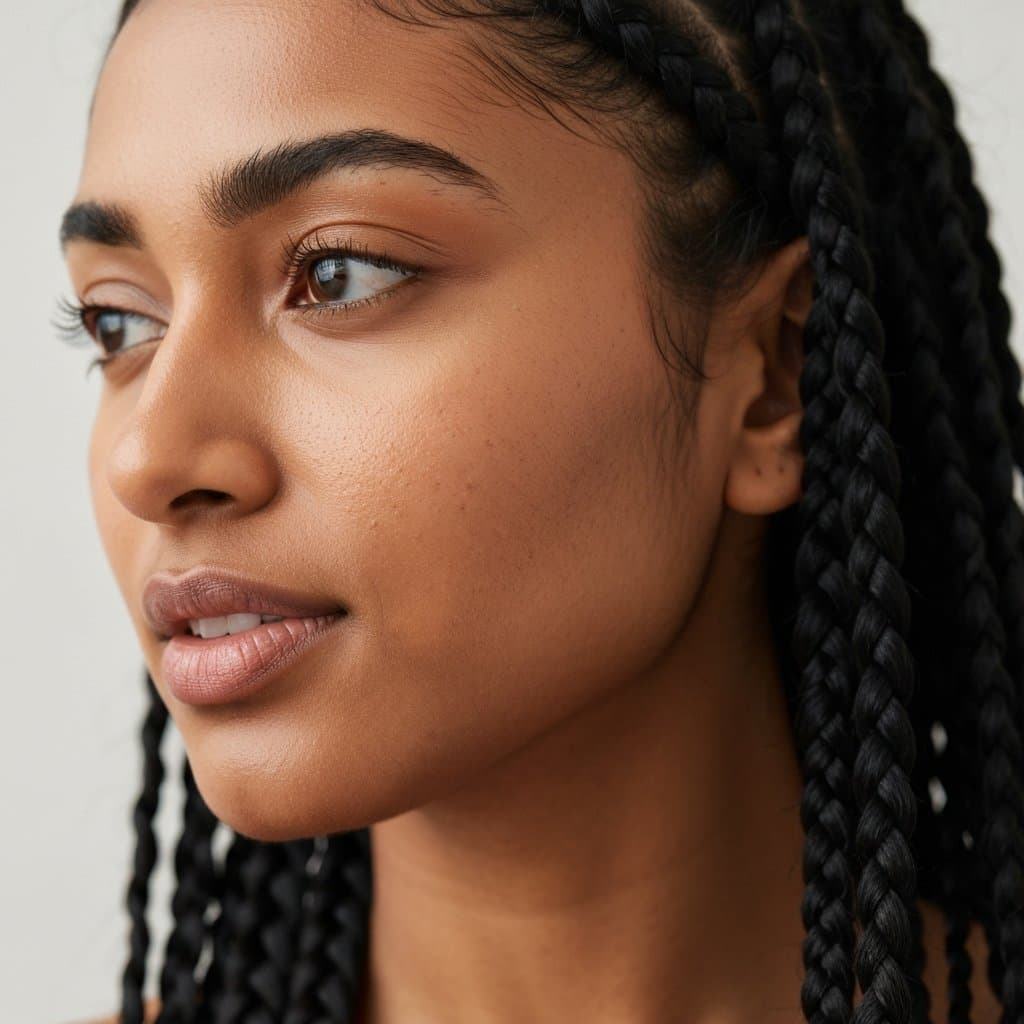The Ultimate Guide to the Butterfly Haircut | Get Effortless Volume & Layers
Welcome to the Butterfly Effect: The Haircut Taking Over
Step into any social media feed, and you'll be met with a cascade of voluminous, face-framing layers that seem to float with effortless movement. This is the magic of the butterfly haircut, a style that has fluttered its way to the top of hair trend lists and for good reason. It masterfully combines the nostalgia of '90s supermodel blowouts with the soft, modern texture we crave today. This haircut isn't just a fleeting trend; it's a celebration of shape, volume, and versatility, offering a transformative look without sacrificing length. It’s the perfect solution for anyone looking to refresh their style, add life to limp locks, or simply embrace a more dynamic and glamorous silhouette.
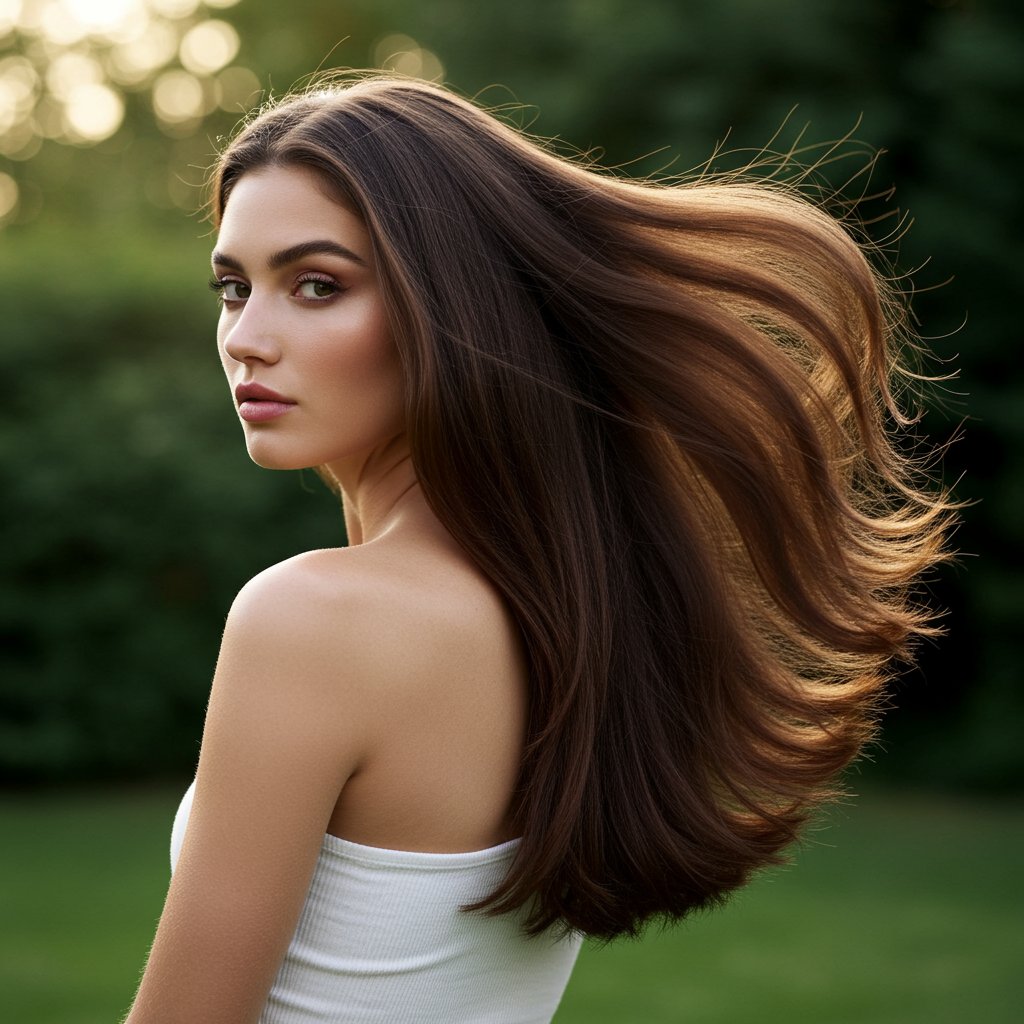
This comprehensive guide will explore every facet of the butterfly haircut. We'll deconstruct its unique layering technique, help you determine if it's the right choice for your face shape and hair type, and differentiate it from other popular styles like the shag or the wolf cut. Furthermore, we’ll provide you with the exact language to use when consulting with your stylist, share professional tips for styling and maintenance at home, and answer the most frequently asked questions about this sensational trend. Prepare to understand why this haircut has captured the hearts of celebrities, influencers, and style-savvy individuals everywhere, and learn how you can achieve this beautiful, face-framing look for yourself.
What Exactly Is the Butterfly Haircut?
The butterfly haircut is a highly strategic, layered style designed to mimic the shape and movement of a butterfly's wings. The genius of this cut lies in its clever duality: it features shorter, face-framing layers on top, blended seamlessly into much longer layers through the rest of the hair. The shorter layers, which typically fall around the chin or collarbone, create the illusion of a shorter haircut from the front, offering incredible volume, shape, and the ability to frame the face beautifully. These top layers are what give the style its signature 'wings'.
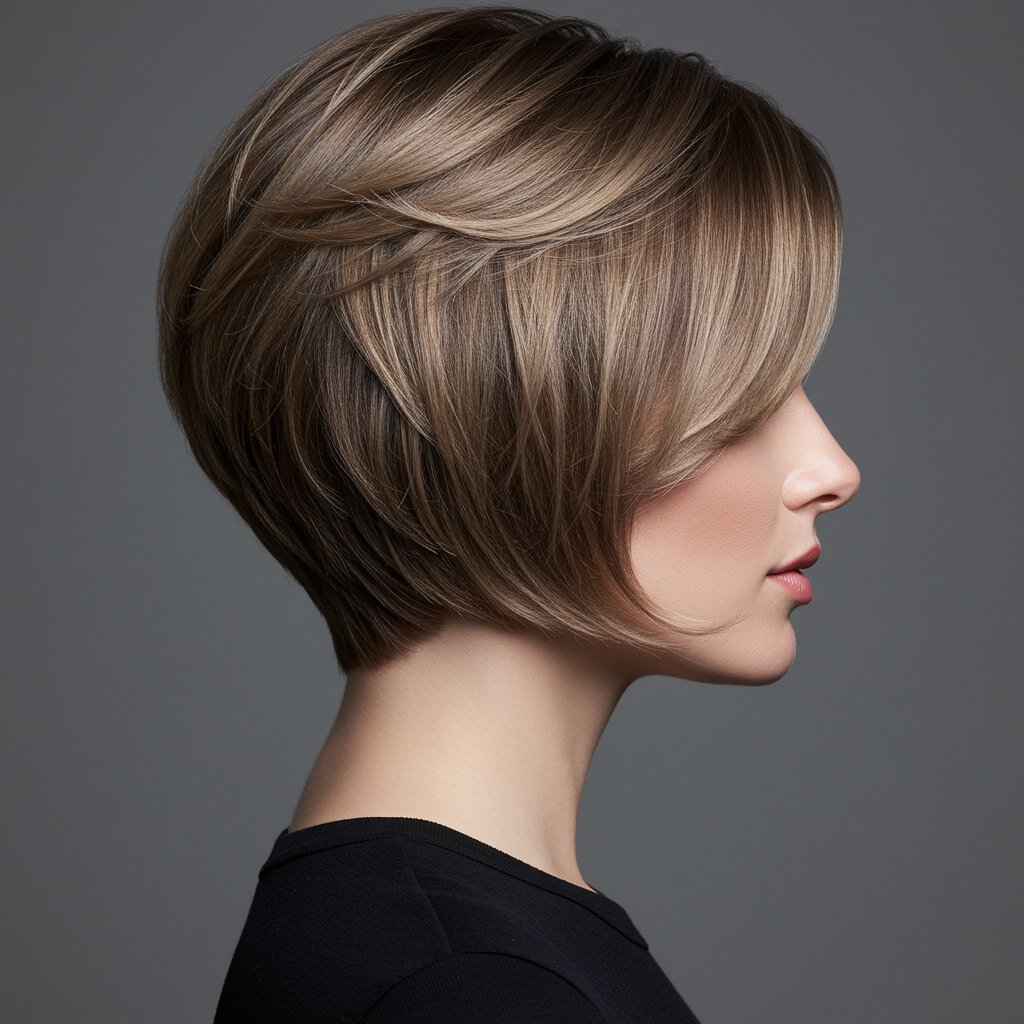
Meanwhile, the longer layers underneath preserve the overall length of the hair, providing a sense of security for those who are hesitant to commit to a big chop. This separation of layers is what creates the style's distinctive silhouette and movement. When styled, the shorter layers bounce and curve away from the face, while the longer lengths flow down the back, creating a stunning, high-impact look that feels both light and full-bodied. It’s a technique that requires precision and a deep understanding of hair texture and head shape, making it essential to seek out an experienced stylist to achieve the perfect result.
Inspired by the feathered, voluminous styles of the '70s and the iconic '90s supermodel blowout popularized by figures like Cindy Crawford, the modern butterfly haircut is a refined evolution. It takes the best elements of these retro looks—dramatic volume and face-framing texture—and updates them with a softer, more blended finish. It's less about rigid, hair-sprayed shapes and more about creating airy, touchable movement that looks effortlessly chic. The cut is designed to work with your hair's natural texture, enhancing it rather than fighting against it, which is a key reason for its widespread appeal.
The Anatomy of the Cut: How It Creates Volume and Movement
The secret to the butterfly haircut's incredible volume and dynamic movement lies in its specific layering technique. A stylist creates this look by sectioning the hair into two main parts: a top section that includes the hair from the crown forward, and a bottom section that comprises the rest of the length. The top section is then cut with shorter, often rounded or feathered layers. These layers are meticulously crafted to cup the face and create lift at the roots, essentially building a voluminous framework right where it’s most visible.
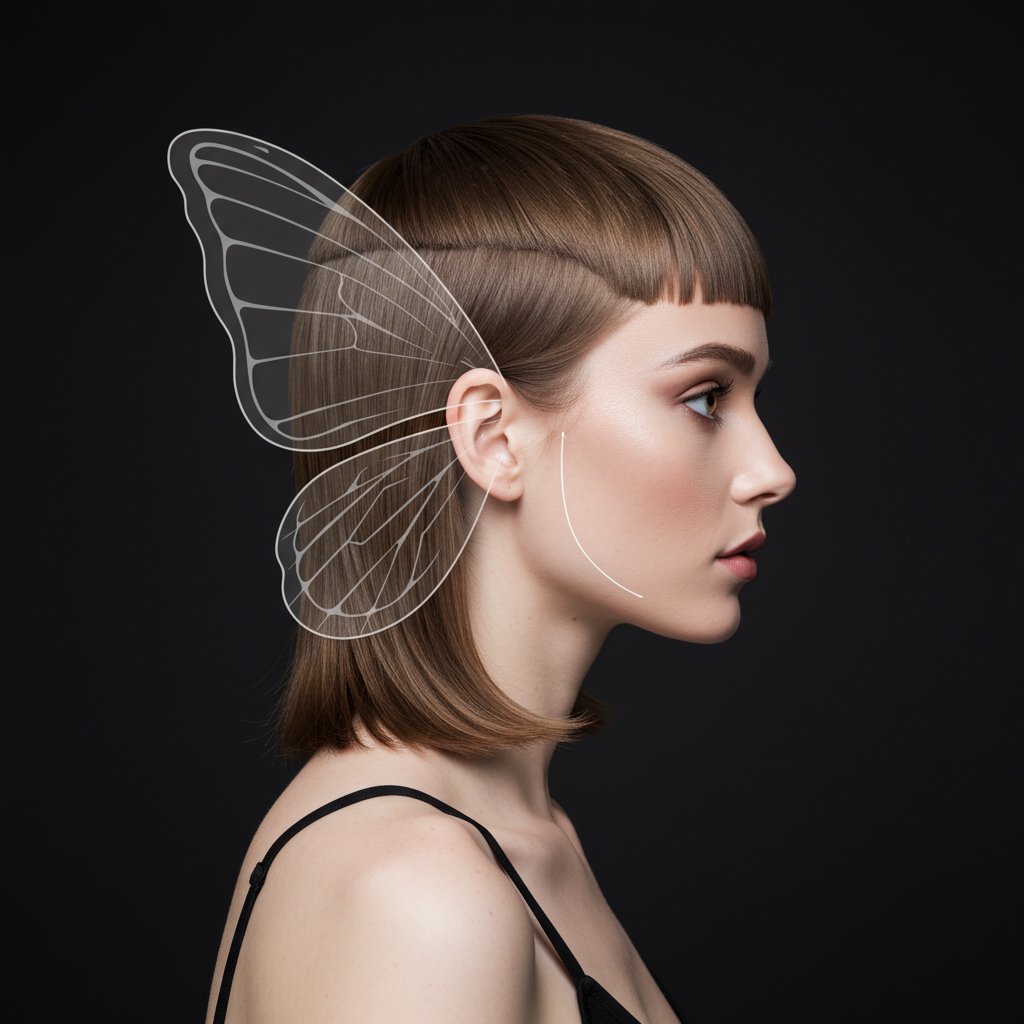
This shorter, layered crown acts as a 'shelf' that supports the rest of the hair, preventing the style from falling flat. When blow-dried with a round brush, these layers create that signature swooping, 'wing-like' effect that frames the jawline and cheekbones. The bottom section is kept significantly longer, with soft, blended layers cut into the ends to remove weight and encourage movement, but without sacrificing the overall length. This contrast between the short, airy top and the long, flowing bottom is the core principle that gives the butterfly cut its unique and flattering shape.
The Role of Face-Framing Layers
The most critical element of the butterfly haircut is the face-framing component. These are not just simple bangs or fringe; they are a series of graduated layers that start short near the cheekbones and progressively get longer, blending into the rest of the top section. This technique, often called 'curtain bangs' or 'bottleneck bangs,' is what draws attention to the eyes and sculpts the face. A skilled stylist will customize the length and angle of these framing pieces to complement your specific face shape, softening a square jaw, elongating a round face, or adding width to a narrow one. This personalized approach ensures the haircut enhances your best features, making it a truly bespoke style.Feathering and Texturizing Techniques
Beyond the basic layering structure, stylists use advanced techniques like feathering and texturizing to perfect the butterfly haircut. Feathering involves cutting the hair in a way that creates a soft, wispy effect at the ends of the layers, which helps them blend together seamlessly and enhances their 'fluttery' quality. This prevents the layers from looking chunky or disconnected. Texturizing, on the other hand, involves using specialized shears or a razor to selectively remove bulk from within the hair shaft. This is particularly important for thick or heavy hair, as it allows the layers to move more freely and prevents the style from looking bulky or triangular. These finishing touches are what elevate the butterfly cut from a simple layered style to a polished, salon-quality masterpiece.Is the Butterfly Haircut Right for You? Hair Types and Face Shapes
One of the greatest appeals of the butterfly haircut is its remarkable versatility across different hair types and face shapes. However, it tends to perform best on medium to thick hair with a straight or wavy texture. These hair types have enough density and natural body to support the distinct layers and hold the voluminous style. For those with thick hair, this cut is a game-changer, as it removes significant weight and bulk, making the hair feel lighter and more manageable while creating beautiful shape and movement. Wavy hair also benefits immensely, as the layers enhance the natural wave pattern, creating a soft, romantic, and effortlessly tousled look.
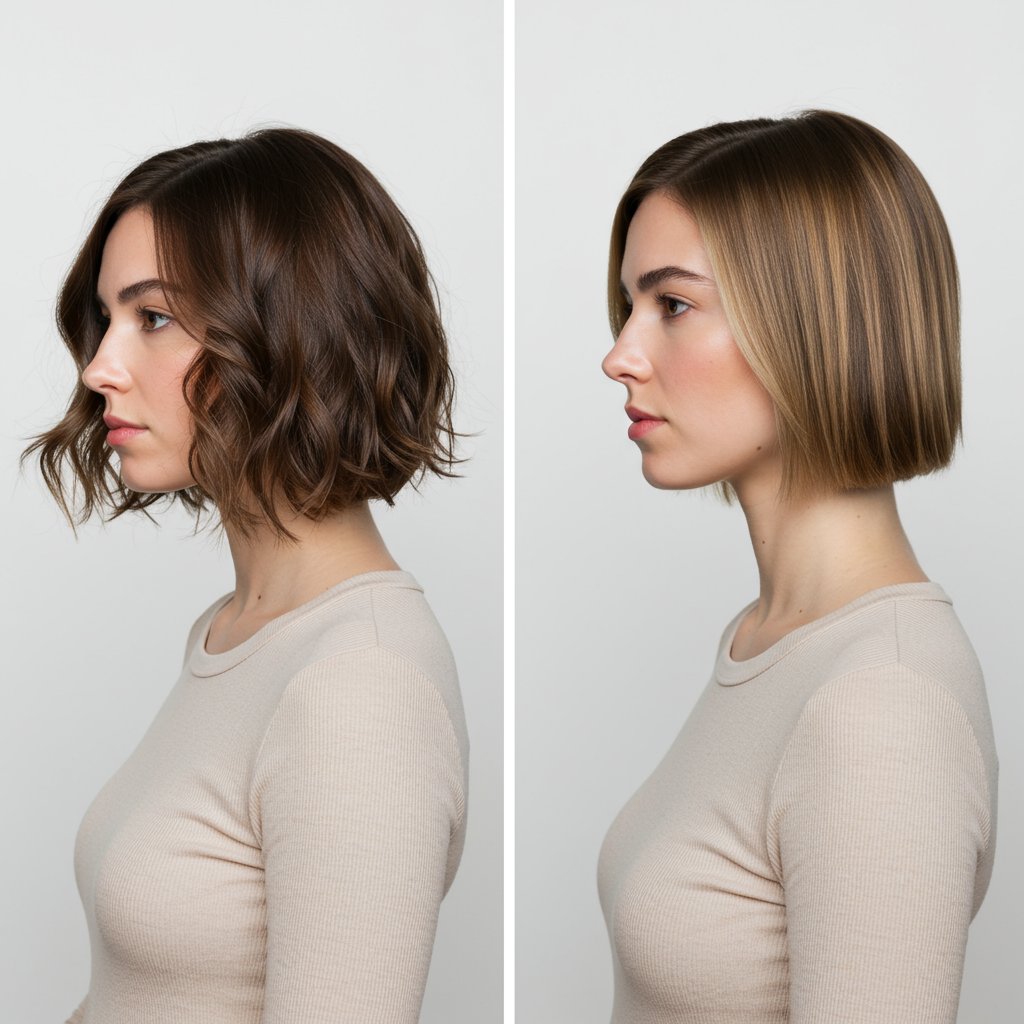
While the butterfly cut can be adapted for fine hair, it requires a more strategic approach. A stylist will need to be careful not to remove too much weight, instead focusing on creating 'invisible' or internal layers to build volume without making the ends appear thin or sparse. For curly hair, the concept can also be adapted into a 'curly butterfly' cut, but the technique is different. It involves a dry-cutting method to work with the individual curl pattern, creating a shape that enhances the curls' natural bounce and volume without causing frizz or disrupting the pattern. Ultimately, a thorough consultation with a professional stylist is crucial to determine how the cut can be tailored to your specific hair profile.
When it comes to face shapes, the butterfly haircut is a universal flatterer because its layers can be customized to contour and balance any facial structure. For oval faces, which are naturally balanced, the classic butterfly cut works perfectly without much modification. For round faces, the face-framing layers can be cut slightly longer, starting below the chin, to create an elongating effect and add definition to the cheekbones. For square faces, the soft, feathered layers around the jawline work wonders to soften sharp angles and add a touch of gentleness to the overall look. For heart-shaped faces, the volume created by the layers around the chin and collarbone area helps to fill out the narrower lower half of the face, creating a more balanced and harmonious silhouette.
Butterfly Cut vs. The Shag vs. The Wolf Cut: Key Differences
In the world of layered hairstyles, it’s easy to get lost in the terminology. The butterfly cut, the shag, and the wolf cut are all popular choices that champion texture and movement, but they each have distinct characteristics and create very different aesthetics. Understanding these differences is key to ensuring you ask your stylist for the look you truly want. The primary difference lies in the layering technique and the overall silhouette each cut creates.
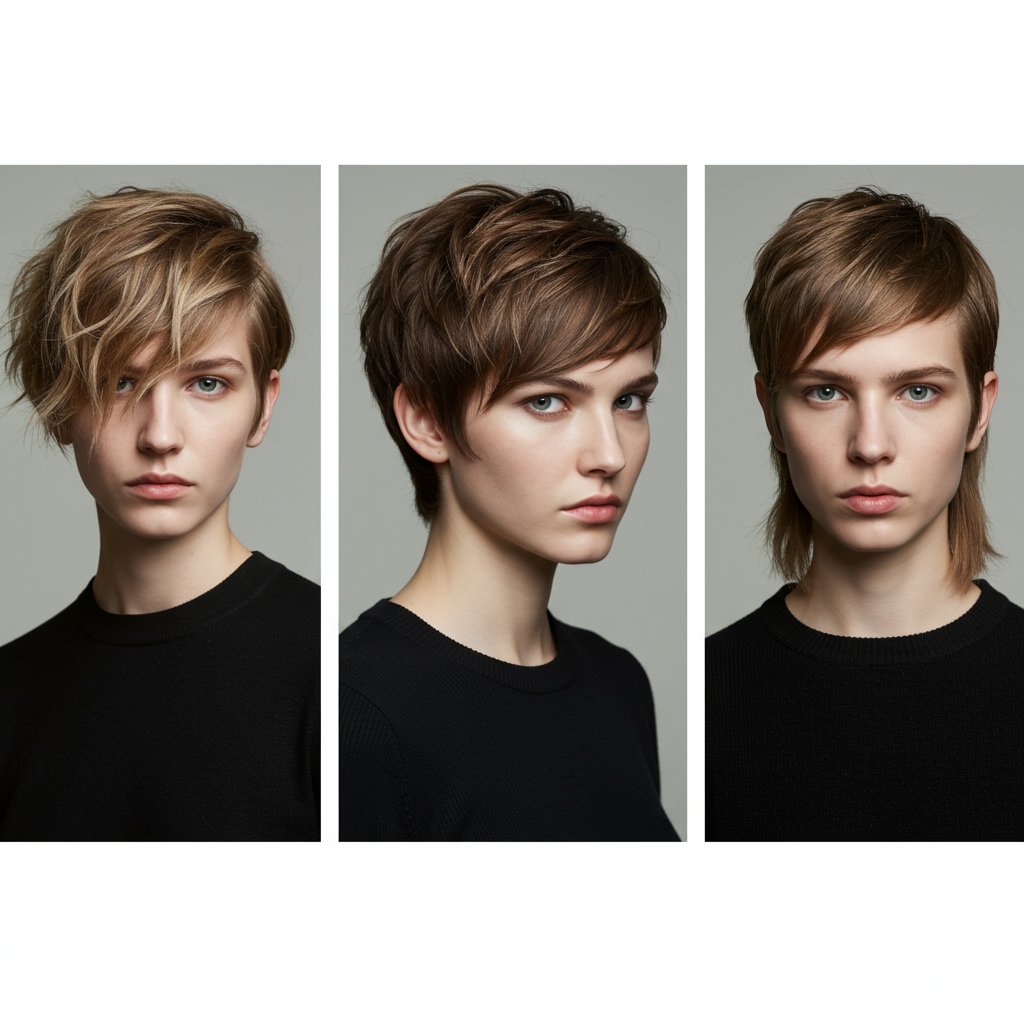
The Butterfly Haircut is defined by its two distinct sections: short, voluminous layers on top and long, flowing layers underneath. This creates a polished, glamorous, and 'bouncy' look reminiscent of a fresh blowout. The layers are generally soft, feathery, and well-blended, aiming for a sophisticated and feminine finish. The focus is on creating volume at the crown and face-framing 'wings' that sweep away from the face, while maintaining significant length in the back. Think '90s supermodel glamour.
The Shag Haircut, on the other hand, is much more rock-and-roll and undone. It features choppy, disconnected layers throughout the entire head, from top to bottom. The shag focuses on creating a uniform texture and removing weight, resulting in a look that is intentionally messy and full of attitude. It almost always incorporates a prominent fringe or bangs, and the layers are concentrated at the crown for a high-volume top that tapers down to thinner, wispier ends. Think '70s rockstar chic.
The Wolf Cut is essentially a hybrid of the shag and the mullet. It takes the heavy, choppy layers of the shag on top and combines them with the longer, more disconnected length of a mullet in the back. The wolf cut is edgier and more daring than the butterfly cut, with a much starker contrast between the short, heavily textured top and the longer back. The overall vibe is wild, untamed, and gender-neutral, leaning into a more alternative and modern aesthetic. While both the wolf and butterfly cuts have shorter layers on top, the wolf cut's layers are far choppier and more visibly disconnected.
How to Ask Your Stylist for the Perfect Butterfly Haircut
Clear communication with your hairstylist is the single most important factor in getting the haircut you envision. Simply asking for a 'butterfly haircut' might not be enough, as every stylist has a slightly different interpretation. To ensure you and your stylist are on the same page, bringing multiple reference photos is non-negotiable. Search for images of the butterfly haircut on various hair types and colors, and select a few that best represent the volume, layer length, and overall shape you're hoping to achieve. Point out exactly what you like about each photo—whether it's the length of the face-framing pieces, the softness of the layers, or the amount of volume at the crown.
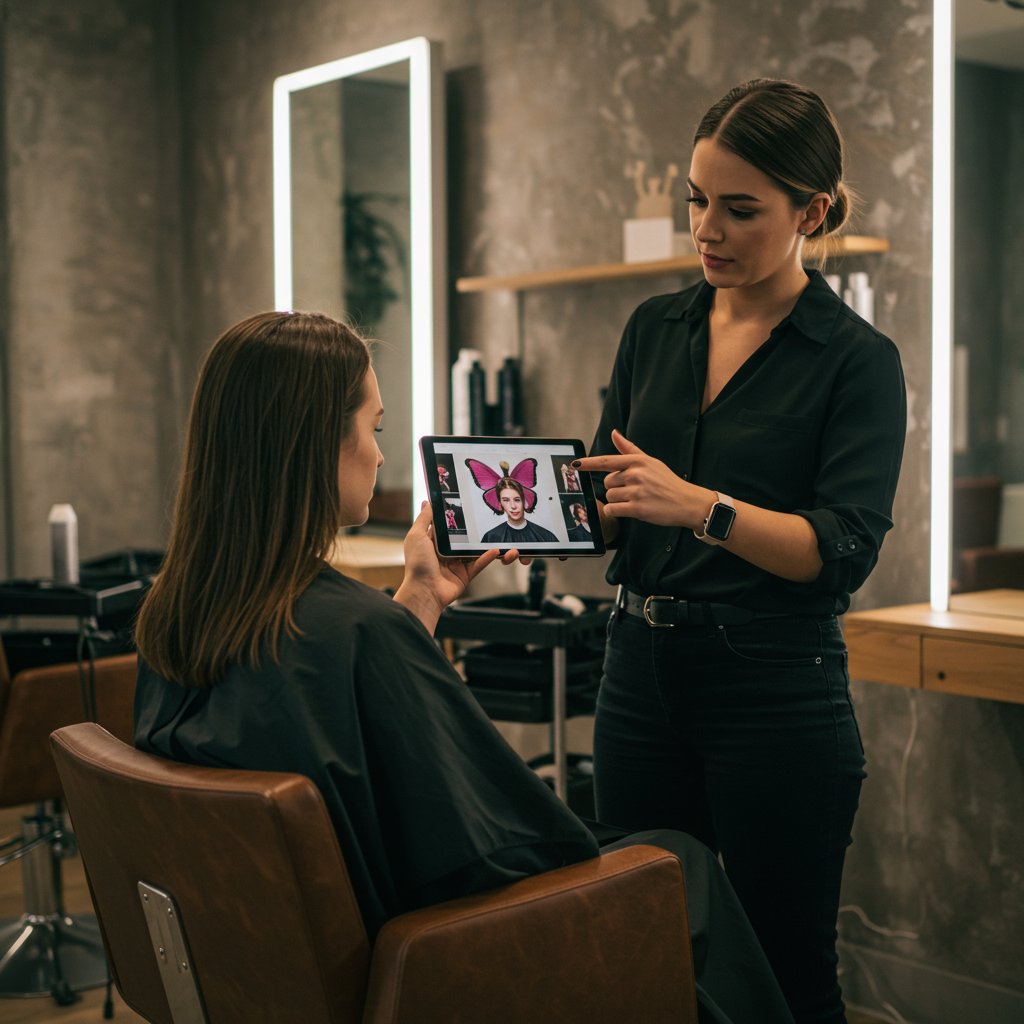
Beyond photos, use specific language to describe the key features of the cut. Mention that you want 'short, face-framing layers that start around the chin' and 'long layers throughout the back to maintain length.' Use descriptive words like 'bouncy,' 'airy,' 'feathery,' and 'voluminous.' It's also crucial to discuss your lifestyle and how much time you're willing to dedicate to styling each day. Be honest about whether you prefer to air-dry or you're comfortable using a blow-dryer and round brush. This information will help your stylist tailor the cut to your needs, perhaps by adding more texture for an air-dry style or keeping layers slightly longer for easier heat styling.
Finally, have a conversation about your hair's history and texture. Tell your stylist about your hair's natural tendencies—does it get frizzy? Does it fall flat easily? Is it color-treated? This context is vital for them to make the right technical decisions. A great stylist will listen to your desires, analyze your hair and face shape, and then offer their professional opinion on how to best adapt the butterfly haircut for you. This collaborative approach ensures that you leave the salon not just with a trendy haircut, but with a style that is perfectly suited to you and that you feel confident maintaining.
Styling Your Butterfly Haircut at Home: Tools and Techniques
One of the best features of the butterfly haircut is its versatility in styling. While it looks stunning with a full, bouncy blowout, it can also be styled for a more casual, air-dried look. To achieve the signature voluminous, '90s-inspired blowout, you'll need a few key tools: a powerful blow-dryer with a nozzle attachment, a medium-to-large round brush, and a volumizing mousse or spray. Start by applying the mousse to damp, towel-dried hair, concentrating on the roots. Section your hair, and beginning with the shorter top layers, use the round brush to lift the roots as you dry. Over-direct the hair—pulling it up and forward—to create maximum volume. As you reach the ends, roll the brush inwards or outwards to create that classic C-curve or flick.
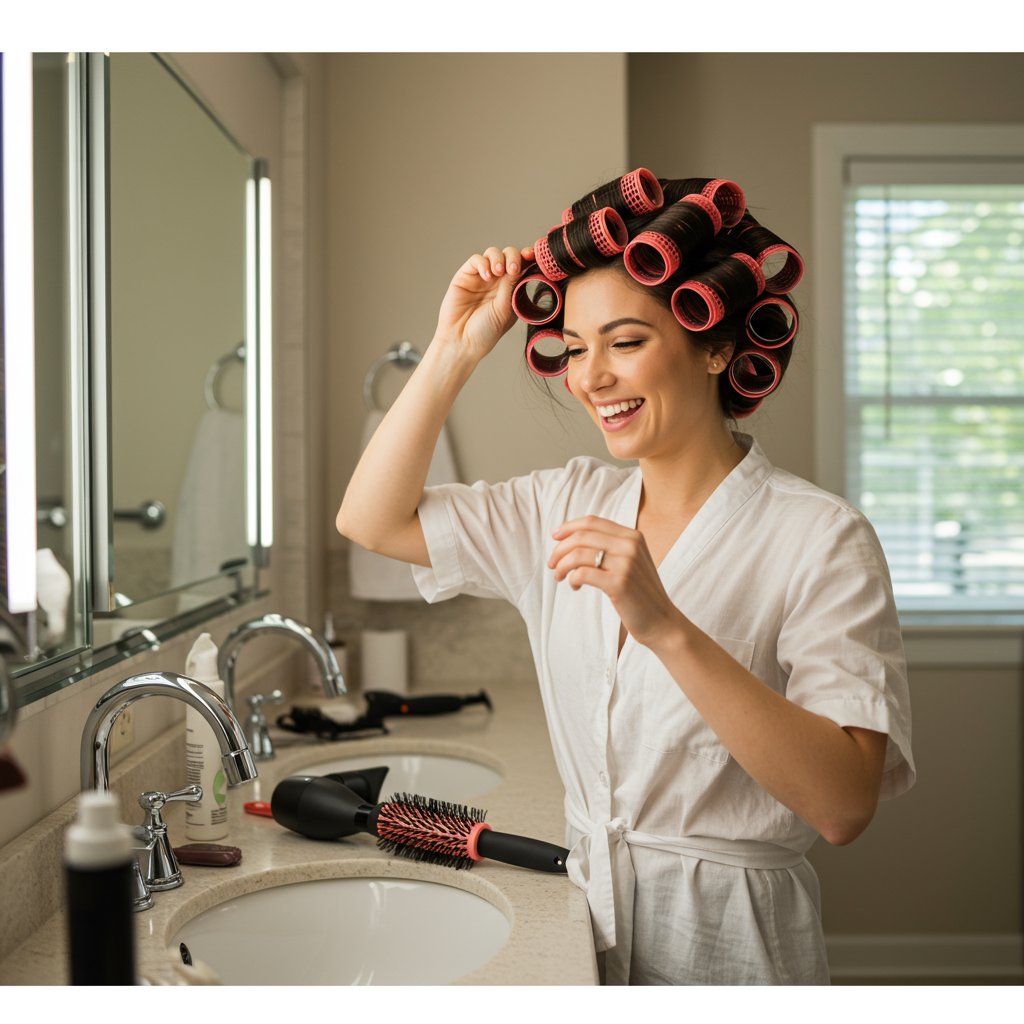
For an even more dramatic and longer-lasting look, velcro rollers are your best friend. After blow-drying each section until it's about 90% dry, wrap it around a large velcro roller while it's still warm. Focus on the top and face-framing sections, rolling the hair away from your face to create those signature 'wings'. Let the rollers sit for at least 15-20 minutes (or until your hair has completely cooled) before taking them out. This cooling process is what sets the shape and volume in place. Once you remove the rollers, gently shake your hair out with your fingers and finish with a light-hold hairspray or a texturizing spray to add definition and hold without stiffness.
If you prefer a lower-maintenance routine, the butterfly cut can be beautifully air-dried. The key is to use products that enhance your natural texture and prevent frizz. After washing, gently scrunch a leave-in conditioner or a wave-enhancing cream into your hair. You can then let it air-dry completely. For extra lift at the roots, you can use small clips at the crown while it dries. Once dry, you can use a curling iron or wand to touch up a few of the face-framing pieces to give them a bit more direction and polish. This effortless approach results in a softer, more bohemian version of the style that is equally beautiful and perfect for everyday wear.
Maintenance and Upkeep: Keeping Your Butterfly Cut Looking Fresh
To keep your butterfly haircut looking its best, regular maintenance is key. Because the style relies on the precise length difference between the short and long layers, it can start to lose its distinctive shape as your hair grows out. To maintain that perfect silhouette and bouncy volume, it’s recommended to book a trim every 6 to 8 weeks. This will keep the face-framing layers sharp and prevent the longer layers from developing split ends, ensuring the entire style remains healthy and well-defined.
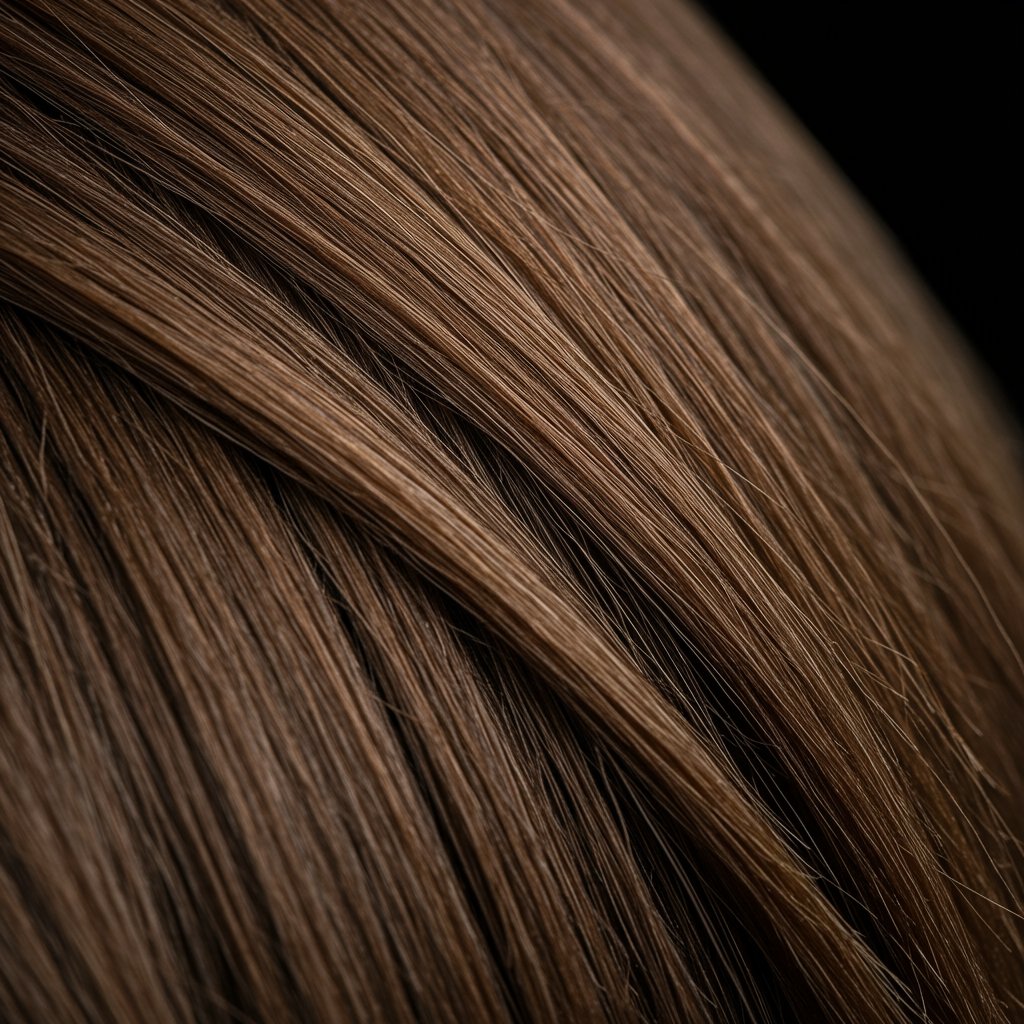
Between salon visits, focusing on hair health is paramount, especially if you regularly heat-style your cut. Voluminous styles often require heat, which can take a toll on your strands. Always use a high-quality heat protectant spray before blow-drying or using hot tools. Incorporate a deep conditioning mask or treatment into your routine once a week to replenish moisture, strengthen the hair cuticle, and keep your layers looking glossy and smooth. Healthy hair not only looks better but also holds a style more effectively, meaning you'll get more mileage out of your styling efforts.
To extend the life of your blowout and reduce the need for daily heat styling, invest in a good dry shampoo. Applying a small amount to the roots on the second or third day can absorb excess oil and instantly revive volume, helping you maintain that fresh, airy look. Additionally, sleeping with your hair in a loose bun or ponytail on top of your head (often called a 'pineapple') can help preserve the volume and shape of your style overnight. This prevents the hair from getting flattened or tangled while you sleep, making your morning routine much quicker and easier.
Pro Tips for the Perfect Butterfly Look
- Start with Volume at the Roots: The foundation of this style is lift. Always use a volumizing product at the roots before you begin styling, even if you're air-drying.
- Master the Round Brush: Practice makes perfect. Learning to properly use a round brush to create tension and shape is the number one skill for achieving a salon-quality blowout at home.
- Don't Forget the Cool Shot: After drying a section with hot air, use the 'cool shot' button on your blow-dryer for a few seconds. This helps to set the style and adds extra shine.
- Customize Your Part: While a center part is classic for the butterfly cut, don't be afraid to experiment with a deep side part to create dramatic, sweeping face-framing layers on one side.
- Enhance with Color: Subtle highlights or balayage can beautifully accentuate the layers of a butterfly cut, adding dimension and making the movement even more visible.
- Finish with a Shine Serum: After styling, apply a tiny amount of a lightweight shine serum or oil to the ends of your layers to tame any flyaways and give your hair a polished, healthy-looking finish.
Frequently Asked Questions about the Butterfly Haircut
How long does my hair need to be for a butterfly haircut?
Ideally, your hair should be at least shoulder-length or longer. This provides enough length to create the necessary contrast between the shorter top layers (which might end at the chin or collarbone) and the longer layers underneath. The longer your hair, the more dramatic and noticeable the 'butterfly' effect will be.Can I get a butterfly cut with bangs?
Absolutely! The butterfly cut pairs beautifully with various types of bangs. Curtain bangs are the most popular and seamless pairing, as they blend directly into the shorter face-framing layers. However, you can also adapt the look to work with wispy, straight-across bangs or side-swept bangs for a more customized style.Is the butterfly haircut high maintenance?
It can be, depending on your hair type and desired finish. To achieve the classic, bouncy blowout look, it requires regular heat styling. However, if your hair has a natural wave and you embrace a more low-key, air-dried style, it can be relatively low maintenance. The most important commitment is getting regular trims every 6-8 weeks to maintain the shape.Does the butterfly haircut work on fine hair?
Yes, but with modifications. For fine hair, a stylist should use a technique that creates 'invisible' or internal layers to build volume from within, rather than removing too much bulk with traditional layering. This prevents the ends from looking thin. The goal is to create the illusion of fullness, and when done correctly, it can make fine hair appear much thicker and more voluminous.What's the difference between this and the 'Rachel' haircut?
The 'Rachel' from the '90s was characterized by much shorter, choppier, and more distinct layers that flipped inwards around the face. The modern butterfly haircut is a softer, more blended evolution. Its layers are longer, more feathery, and are designed to sweep outwards and away from the face, creating a more airy and less 'helmet-like' silhouette than its famous predecessor.How much does a butterfly haircut cost?
The cost can vary significantly based on the salon's location, the stylist's experience level, and the length and thickness of your hair. As it's a technical cut that requires precision, you can expect it to be priced as a designer or specialty cut, often falling in a higher price range than a standard trim. It's best to consult with your chosen salon for specific pricing.Conclusion: Is It Time for Your Transformation?
The butterfly haircut is more than just a passing trend; it's a testament to the power of a well-executed, technical cut. It offers a unique solution for those seeking a significant change without a drastic commitment, providing the playful feel of short hair around the face while preserving coveted length. Its ability to create unparalleled volume, movement, and a universally flattering frame for any face shape has solidified its status as a modern classic. Whether you're looking to breathe life into flat hair, manage thick locks, or simply update your style with a touch of glamour, the butterfly haircut presents a versatile and stunning option.
Embracing this style is about celebrating texture, shape, and a dynamic new silhouette. By understanding its structure, communicating effectively with an experienced stylist, and mastering a few key styling techniques, you can unlock the full potential of this beautiful haircut. If you're ready to let your style take flight and transform your look with layers that are as light and graceful as their namesake, consulting a professional stylist is your next step. Prepare to experience the confidence that comes with a haircut that is truly designed to move, impress, and turn heads.

